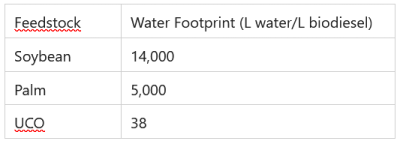The Deceptive Simplicity of "Renewable"
Walk through any climate conference today, and you’ll hear the same triumphant refrain: “Biofuels are renewable!” The implication seems straightforward—plants grow back, fossil fuels don’t. Yet this binary thinking dangerously obscures a critical truth: not all biofuels are created equal. Crop-based biodiesel, derived from soy or palm, achieves approximately 50% CO₂ reduction versus fossil diesel 1. Meanwhile, waste-based biodiesel—crafted from used cooking oil (UCO) and animal fats—boasts an 83% reduction under ISO 14064 standards 1. This 33-point gap isn’t a marginal improvement; it represents a fundamental divergence in how we conceptualize carbon neutrality in the bioeconomy.
The distinction lies in what scientists call “system boundaries.” Crop-based models only account for tailpipe emissions versus crop absorption. Waste-based biodiesel, however, incorporates four additional carbon-avoiding mechanisms:
- Methane prevention (landfill diversion stops CH₄ conversion)
- Avoided extraction (no new crude drilling required)
- Zero indirect land-use change (ILUC) (no displacement of food crops)
- Circularity bonus (waste valorization replaces virgin resource consumption)
This explains why California’s Low Carbon Fuel Standard assigns UCO biodiesel a carbon intensity (CI) score of 15.38 gCO₂e/MJ—nearly 85% lower than fossil diesel’s 102 gCO₂e/MJ 10. When scaled, this isn’t incremental progress; it’s system-level decarbonization.
The Water-Energy Nexus: 6 Million Liters per Ton
Water conservation rarely features in biodiesel discussions, yet it reveals waste-based fuel’s hidden superpower. Consider the math:
- 1 ton of UCO biodiesel prevents contamination of 6 million liters of water 4
- Equivalent to the annual drinking water for 12,000 people (WHO standards)
How? Used cooking oil improperly disposed of enters aquifers, increasing BOD (biological oxygen demand) by 150,000 mg/L—15,000 times higher than raw sewage 4. This eutrophication cascade kills aquatic ecosystems while increasing water treatment costs by 40%.
Meanwhile, crop-based biodiesel relies on irrigation-intensive feedstocks:

Source: Derived from 1 wastewater impact studies
Renewlium’s Mumbai processing hub now diverts 314 million pounds of UCO annually from India’s waterways—enough to fill 4,800 Olympic pools 5. This isn’t ancillary; it’s central to the waste-based advantage.
The Food-Fuel False Dichotomy, Debunked
Critics often weaponize biofuels’ alleged “food versus fuel” conflict. Yet waste-based biodiesel transforms this zero-sum game into a positive-sum solution:
- Zero displacement: UCO comes from consumed food—no additional farmland required
- Price stabilization: India’s UCO collection programs increase restaurant profits by 12-18% while reducing municipal waste costs 5
- Nutritional neutrality: Unlike corn ethanol, no calories are diverted from human consumption
The European Waste Advanced Fuel Association confirms: 96% of UCO would otherwise be landfilled or dumped without biodiesel markets 3. This makes waste-derived fuels the ultimate “tapas-to-tank” circular economy—turning yesterday’s pakoras into tomorrow’s renewable energy.
Traceability: The Armor Against Greenwashing
As renewable diesel demand surges, feedstock fraud has become biodiesel’s dirty secret:
- 30% of Asia’s “UCO” exports contain virgin palm oil 12
- Palm oil’s CI score (85 gCO₂e/MJ) negates 70% of biodiesel’s benefits 10
Renewlium counters this through blockchain-enabled traceability:

This system verifies 100% vetted suppliers while using isotopic testing to detect palm contamination below 0.5% thresholds 12. For ESG investors, this isn’t optional—it’s the bedrock of credible carbon accounting.
Regulatory Tailwinds: From Niche to Norm
2025 marks waste-based biodiesel’s regulatory inflection point:
Europe’s Double-Counting Revolution
Under ReFuelEU Aviation:
- Waste SAF receives 1.2x credit multiplier versus crop-based alternatives
- Cover crops like camelina now qualify under Annex IX revisions 3
- Union Database (UDB) mandates real-time mass balance tracking
India’s UCO Gold Rush
Post-2024 GST reforms:
- Tax credits covering 40% of collection infrastructure costs
- National Repurpose Used Cooking Oil (RUCO) program targets 3.2 million tons/year by 2030 1
- FSSAI mandates RFID tracking for exporters
These policies transform waste oils from disposal headaches into strategic energy assets—with collection rates projected to jump from 15% to 65% by 2030.
Renewlium's 2025 Impact: By the Numbers
Our closed-loop system demonstrates scalable impact:
- 11,200 MT CO₂e avoided = 2,400 cars off roads or 8,200 acres of forest preserved
- 6.7 billion liters of water protected from contamination—equivalent to Chennai’s annual rainfall
- Zero food crop displacement via 100% waste feedstock dedication
Critically, we achieve this without “carbon colonialism“:
- 92% of suppliers are small Indian restaurants and street vendors
- Local collection jobs pay 35% above regional minimum wages
- No ecosystem conversion for feedstock production
The Future: From 83% to Carbon Negative
Waste-based biodiesel’s next evolution integrates BiCRS (Biomass Carbon Removal and Storage):
- Pyrolysis char sequestration: Heating UCO without oxygen yields biochar that locks carbon for centuries
- Marine permaculture: Seaweed-enhanced UCO biodiesel boosts ocean carbon sinking by 24% 1
- Co-processing synergy: Blending UCO with captured CO₂ creates carbon-negative e-fuels
Early trials show potential for -25 gCO₂e/MJ fuels—turning every truck into a carbon sink.
Why Your ESG Strategy Can't Ignore Waste Hierarchy
The implications extend beyond energy:
- Portfolio resilience: Waste-derived fuels avoid crop price volatility (soy prices fluctuated 42% in 2024)
- Scope 3 superiority: UCO biodiesel cuts supply chain emissions 3x faster than crop alternatives
- Just transition: Creates 12x more jobs per kiloliter than fossil refining 4
As regulations tighten—with California’s LCFS requiring 90% CI cuts by 2045—waste-based pathways offer the only viable compliance trajectory.
“Sustainability isn’t about doing less harm. It’s about creating more good. Waste-based biodiesel proves we can transform pollution into propulsion while nourishing communities. That’s not cleaner fuel—that’s civilizational evolution.”










